The 5 Quickest Ways to Boost Online Sales During A Slump
April 27, 2017
If you’ve owned or managed an ecommerce store for more than a few months, there’s one thing that you’re keenly aware of…
A good product or service does not always mean consistent sales.
You could have the best product at an attractive price point, and do everything you’re supposed to. And while some months are champagne and steak, others are still water and ramen noodles (not that there’s anything wrong with a little ramen now and then).
Growth and consistency are two things we all strive for in this industry, and with the right marketing strategies in place, growth can be seen in a relatively short amount of time (depending on your definition of “short”). Unfortunately, achieving consistency means a lot of testing, breaking, fixing, analyzing, breaking again, fixing again, recognizing patterns, implementing new strategies and repeating.
All that to say: Achieving consistency in ecommerce takes time.
For the majority of ecommerce stores, sales slumps are a regular occurrence. But not everyone has a plan in place to balance things out when they happen. For that reason, we’ve compiled a list of our favorite ways boost online sales when your business is seeing a lull.
1. Send A One Time Offer Email
So many small business owners still don’t realize the power that is contained within an email list. So much power that it could catapult you from “ramen” to “steak” in a day!
Frank Kern, once touted as the “Best Digital Marketer in the World”, refers to a good email list as a mysterious stranger waiting to give you loads of cash if you can give them a reason to.
Give them a reason!
One quick way would be to run a one day sale. But there is some planning that will need to go into this to make sure the sale goes off without a hitch.
- Pick a hot ticket item or items from your store and decide on a significant discount to offer your buyers. Try to offer a higher-than-normal discount, but check the math to make sure it will still result in a healthy addition to your bottom line.
- Promote the sale HEAVILY through email and social media before the sale date.
- Make sure support is in place to be able to handle what could be abnormally high volume on the day of the sale.
- Make sure the scarcity of the sale (“One Day Only!”) is in as many places as possible, including your website, your checkout page, the actual cart, and anywhere else your buyers could see it.
Without digging too deep into email strategy, some of the main things to focus on while crafting your main offer email include subject line, benefits, call to action and scarcity.
Subject Line
If your subject line isn’t enticing enough for the reader to open the email, they won’t. Intrigue and excite your audience enough to get them to open the email, but don’t give them too much detail. Some examples you could try include:
We probably shouldn’t be doing this…
We’ve never had a sale like this
Today is the day!
Check out this list of high converting sales subject lines from ThriveHive.
Benefits
Make the body of your email about the buyer, not about you. Focus on the benefits the customer would see when taking advantage of the sale, owning the product, etc. Use “you” more than “we” or ”I”.
Call to Action
Use a strong call to action in the copy. Avoid your typical “Learn More” or “Find Out More” language and get right to the point: “Claim My 70% Off” or “Shop [PRODUCTS] Now”.
Scarcity
Make sure that the scarcity aspect of the sale is in two different places in your email. (see below)
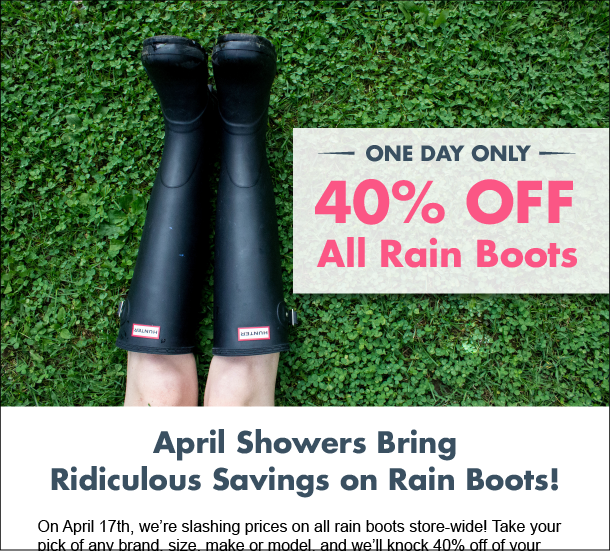
If running a big sale isn’t an option for you, or you’d like to test another tactic, you could also try a “buy one get one free/discounted” promotion, offer free shipping on all orders for a day (again, do the math), or even just offer a returning customer-only incentive.
**Note** If your marketing strategy doesn’t contain an email list-building component (i.e. You don’t have an email list), that’s alright. You can deploy the same concepts through social media, affiliate marketing opportunities, and other channels.
2. Upsell, Upsell, Upsell
Another strategy you should be using to make the most out of the sales you already have is to increase your average sales price.
Raising your prices may seem like a good way to accomplish this, but that is something you’ll want to test before launching. The quickest way to do this in ecommerce is by upselling: Recommending products or services that complement the buyer’s initial purchase. And you have so many opportunities to use this strategy too.
Shopping Cart
Start with your shopping cart. Make sure that, as customers are checking out, they are presented with other similar items they might be interested in adding to their cart as well.
Take Amazon, for example. They’re the masters of the upsell. And while we can’t all be Amazon, they’re often a great resource to look to for sales strategies to model.
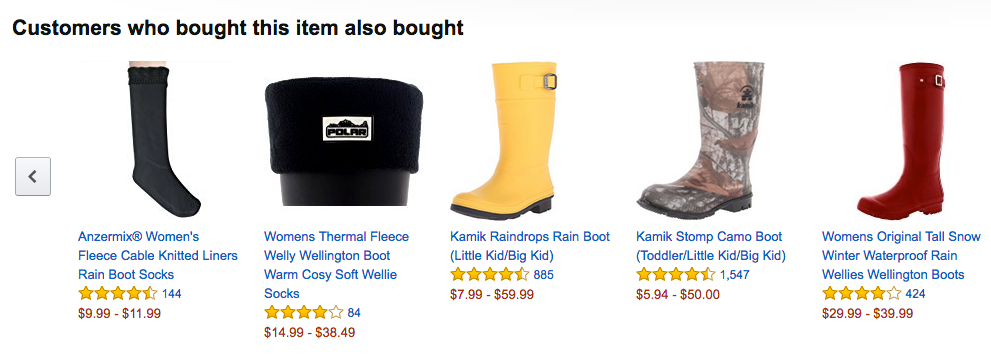
Thank You Page
Don’t stop at the shopping cart, though. Your cart “Thank You Page” is another good place to recommend complementary items, since customers tend to analyze this page closely for shipping details, price confirmation, and to clarify any other questions about receiving the item.
Use the extra attention given to this page to work in your favor. Many cart platforms like WooCommerce, Volusion and Magento even offer “one click checkout” integrations that will allow your customers to add the item to their order with a single click.
Confirmation Email
When your buyers start to wonder how soon their product is going to arrive or they want to double check order details, where will they check? The confirmation email.
This is another channel that receives a ton of exposure, yet often flies under the radar of many ecommerce businesses. Use it! Recommend other products or categories that might garner interest, and even offer discounts towards the customer’s next purchase!
Be sure to apply scarcity & loss aversion tactics here, as well. Expiration dates on any discounts or offers or discounts are a MUST. A customer will be twice as likely to complete a purchase if they think they may lose the opportunity to do so in the future.
If you plan on trying the first tactic (one time sale) it’s a really good idea to have this upsell strategy implemented first. This way, you’ll essentially be multiplying the effects of the higher volume you receive from the sale, and incentivizing customers in more ways than one.
3. Use A Tool to Recapture Abandoned Carts
This is another tool that, if you’re going to be running a big one-day promotion, you’ll want to have in place before you do so. And it’s one that your store needs, regardless of any promotions or sales you plan on running.
Since over 70% of online shoppers abandon their shopping carts without checking out, having a cart abandonment tool in place will make the most out of your boosted traffic.
For instance, let’s say that you drive 5,000 prospects to your site when you launch your sale, and 150 make an average purchase of $80. That means 518 people put something in their cart and didn’t check out. With the right Cart Abandonment campaign, you could recover around 100 carts, and about $8,000 more in revenue.
You can check out a demo of CartStack’s Cart Abandonment tool here to see how users are recovering between 15% and 25% of all abandoned carts, and getting a $27 : $1 ROI.
4. Run a Facebook Video Ad
According to MediaKix, Facebook videos have increased 360% in news feeds and there are roughly 3.8 billion video views per day.Hubspot says that 90% of users say videos greatly influence their decision making process, and ⅓ of all time spent on the internet is spent watching videos.
For many in the ecommerce space, video ads are a scary thought. After all, we’re in sales, not video-production! And Facebook’s ad platform can seem daunting to new users. But it’s actually super simple, and could result in a crazy amount of very inexpensive, “high-intent” traffic to your site.
Facebook’s ad manager is equipped with step-by-step guides to help you set up your campaign correctly. And, if at any point you have a question about something, there’s almost always a nearby link to an article explaining your options and how to make the right choice.
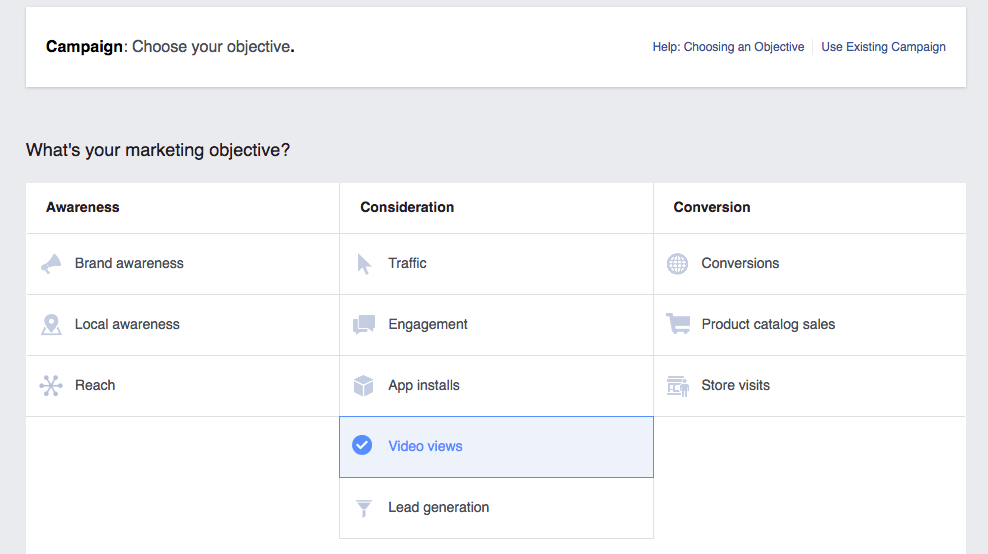
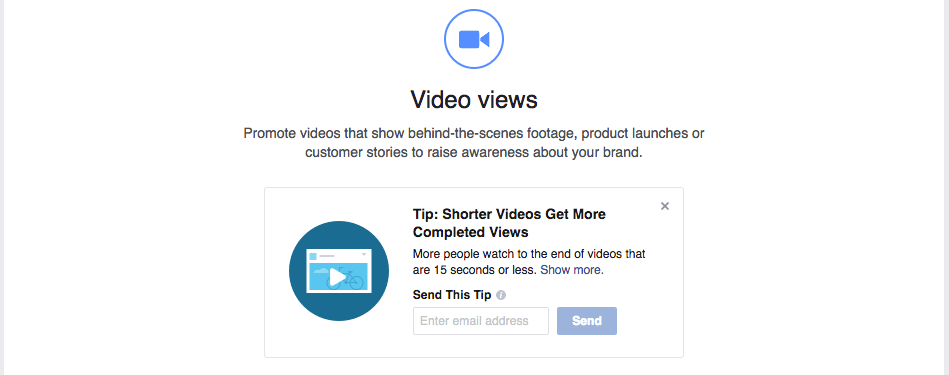
Dive in and give it a try! It’s not half as scary as it looks.
Another thing to keep in mind: Your video ad doesn’t need to be a super-produced, theatrical, cinematic masterpiece. It just needs to intrigue, inform and excite potential buyers. Your viewers are far more concerned with content than quality.
Length
Try to keep it short. You only have 1 second to catch their attention, and 8 seconds to intrigue them enough to keep it. Not only that, a study released by Facebook shows that 79% of a video ad’s total recall can be attributed to the first 10 seconds of the video.
Content
Typically, people aren’t on Facebook because they want to shop. They’re there to catch up on current events, see what their friends are up to, and maybe find out something interesting that they didn’t know before.
Your product is that “something interesting”.
So, in that vein, try not to “sell” the product too much in the video and let the product sell itself. Show different ways to use it, what differentiates it from competitors, and hit on all the benefits of owning the item(s).
Think of the times that a Facebook video has caught your eye and you stopped scrolling and began watching. More than likely, it was because something early on in the video intrigued you enough for you to devote slightly more attention to it.
This should be your goal. Intrigue your potential viewers early on, and retain it.
Check out this example from Joyus, and in-home cardio solution. Notice how the video starts off stating the biggest benefit the product has to offer. This is their “hook”. And, while your video’s production value doesn’t need to be quite at this level, the content of this video is a very good formula for a successful Facebook ad.
Audio
Digiday says that 85% of Facebook users view videos with no sound. So be sure to caption all your video ads to maximize your engagement!
Facebook’s ad platform has a built-in captioning tool, and it’s quite easy to use. Just upload your video, let Facebook convert the audio to captions, and then correct them as necessary. You can also let Facebook’s team review the captions, or just upload your own SRT file (for the advanced users).
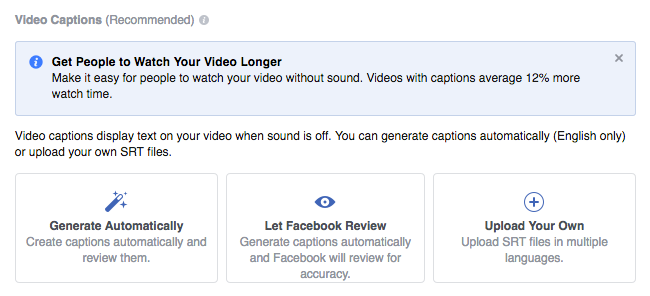
Targeting
You’ll want to make sure you’re running the video ad to the people who will be most likely to buy your product. One really great way that ecommerce companies can dial their Facebook targeting in is through a lookalike audience: An audience of users based on the characteristics of your past buyers.
Facebook gives a great tutorial on setting up a killer lookalike audience in this article.
5. Find an Affiliate
Linking up with a more established ecommerce brand, with a niche and a target audience similar to yours, can be a HUGE way to get a quick sales boost. Not only that, but it will help you to nurture and form relationships with larger ecommerce companies, which could impact your business greatly now and in the future.
Mostly, this strategy involves reaching out to an affiliate and offering them a percentage of sales if they promote your item(s).
Setup Affiliate Tracking
There are many different forms of software, as well as CRMs, that offer affiliate tracking. This is something you’ll want to have set up well in advance of launching any affiliate initiative, to avoid some major headaches later down the road.
If your CRM doesn’t offer affiliate tracking, some other options to look into include:
- LeadDyno
- ShareASale
- Commission Junction
- LinkShare
Decide on a Commission Percentage
Run the math. Decide what percentage of sales you can afford to offer affiliates promoting your products, that will still result in a healthy addition to your bottom line.
Most of the time, somewhere between 10% and 15% is customary. However, the higher a commission you can afford to offer, the more likely a company will be to accept your offer.
Outreach
First, you’ll want to identify some companies with a bigger footprint than yours, but within the same or a similar niche. For instance, if you sell camera straps, you could reach out to a company that sells cameras, tripods or other photo equipment.
Don’t be afraid to put yourself out there. Spend time gathering the contact information for the people most likely to respond to your affiliate request and research them and their company.
Oberlo has a great article about affiliate outreach, including a template for the outreach email, and what information to include in your initial contact here.
6: (Bonus Tip) Plan Ahead
I know, I know… Much easier said than done. But there are measures you can take to avoid letting a sales slump catch you off guard.
Go back and look at your data. Analyze sales patterns from week to week, month to month and year to year. Find consistencies in your high and low points.
Maybe you find your sales always dip in June and boom in November. Once you have this data, you can put procedures in place that allow you to get the most out of your high points, and keep your sales steady at what would normally be a lull.
Having strategies and plans like these in place is what separates the ramen eaters from the steak eaters.
Conclusion
Just because these are OUR 5 favorite ways to get a quick boost doesn’t mean they’re a perfect cookie-cutter solution for every ecommerce store. You have to figure out what works best for your store, your audience and your buyers. Take this “down” time to get creative, do some market research, brainstorm ideas with colleagues, figure out how to best incentivize your core audience, and launch successful strategies that you can keep in your back pocket for future slumps!





